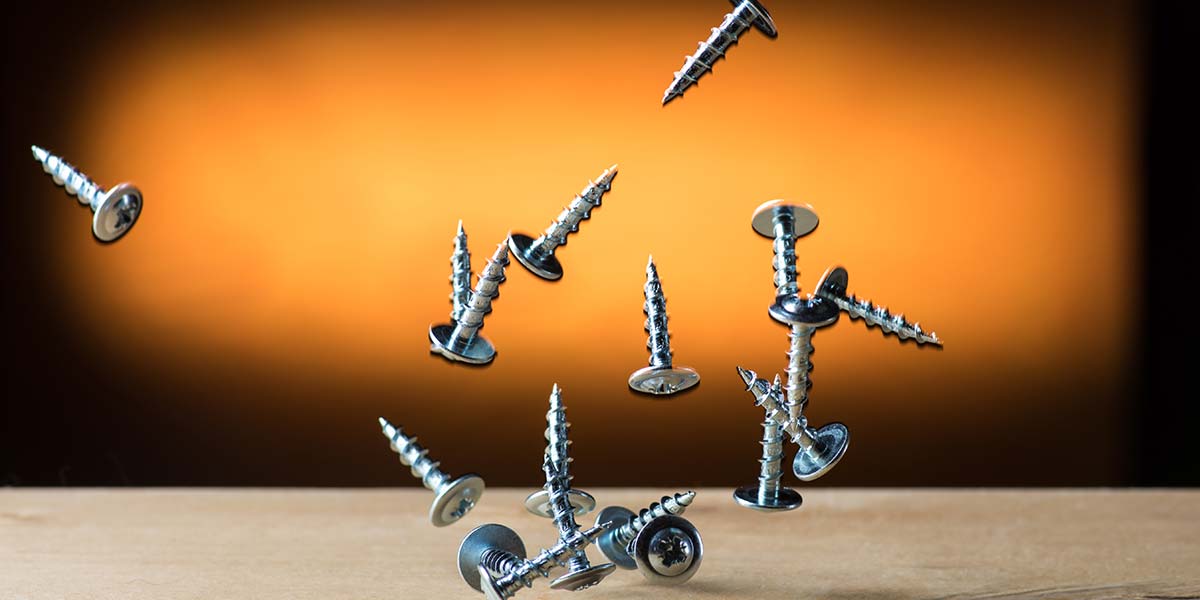A project builder’s version of the well-known law of the universe: “Buttered toast always falls butter-side downward.”
It was, I believe, Richard Feynman, the well-loved outspoken American theoretical physicist known for his seminal work in quantum mechanics, who said, “There are only two classes of people in the world: those who understand the Second Law of Thermodynamics (entropy), and those who don’t.” I think he may have overlooked electronics experimenters and ham radio operators. To me, they know otherwise.
Entropy — the supposedly inviolable law that all systems tend toward disorder — is, in fact, questionable for anyone who builds and invents. It manifests in the way screws and nuts jump out of your fingers when you’re working on a project. Clearly, these tiny, seemingly inanimate objects are the best evidence that there is more to the Second Law than meets the eye.
I put it this way, “Screws and nuts have a mind ... a visibly perverse mind.”
I’ve been keeping my eye on them for years now. They are FAR from inanimate, believe me, I know. Here’s the evidence at your workbench. See if you don’t agree.
IF YOU DROP ONE
- It will always roll much farther than you believe it can.
- If there’s something it can roll under, it will.
- It will always roll in the opposite direction of the sound it makes in falling.
- If it falls without making a sound, you will never find it.
- When it hits, it actively seeks a hiding place that you “just can’t quite reach.”
- If you try to find it with a magnet, it will be made of brass or stainless steel.
- If it falls on a carpet, it buries itself deep in the pile.
- When you think you’ve found it, it will be the screw you dropped from your last project and could not find. What’s more, your action will warn all the other dropped fasteners so that they will continue to elude you (sent to me by Phil Irwin).
- If you lay it down all by itself on your workbench, it will move. It takes the opportunity to move so that it won’t be in the same place when you come back for it.
- You’ll find it in your shoe when you’re undressing that night.
- If you are able to watch it fall, it will know you’re watching it and will give up and forego its evil intentions. This is your only hope of beating the Second Law.
DROPPED FROM A LADDER OR A TOWER
- Big bolts and nuts will always hit and damage something, like a late-model Mercedes, Lexus, or Cadillac.
- If you’re at home, they will always bounce just outside your property.
- They will seek out flower beds and dense ground cover, and scrupulously avoid plain surfaces and driveways.
JUNKBOX COROLLARIES
- If you need four screws for a project, there will only be three in your junkbox.
- If you need a one inch screw, the longest that will be in your junkbox will be 3/4 inch.
- If you need a 6-32 nut, all the nuts in your junk box will be 8-32 or larger.
- All screws in your junkbox will be slot-blades if you need a Phillips.
- Your local hardware store is always out of the size you need, except in brass if you need stainless.
CONSPIRACY DEMONS
- Solder hardens one millisecond after a component is too hot to hold onto.
- If you spill something on your workbench, the only paper in your reach to wipe it up will be your schematic.

I’m sure at least a few of these have resonated with you. Feel free to send your own screw(y) rules to me at [email protected]. NV


